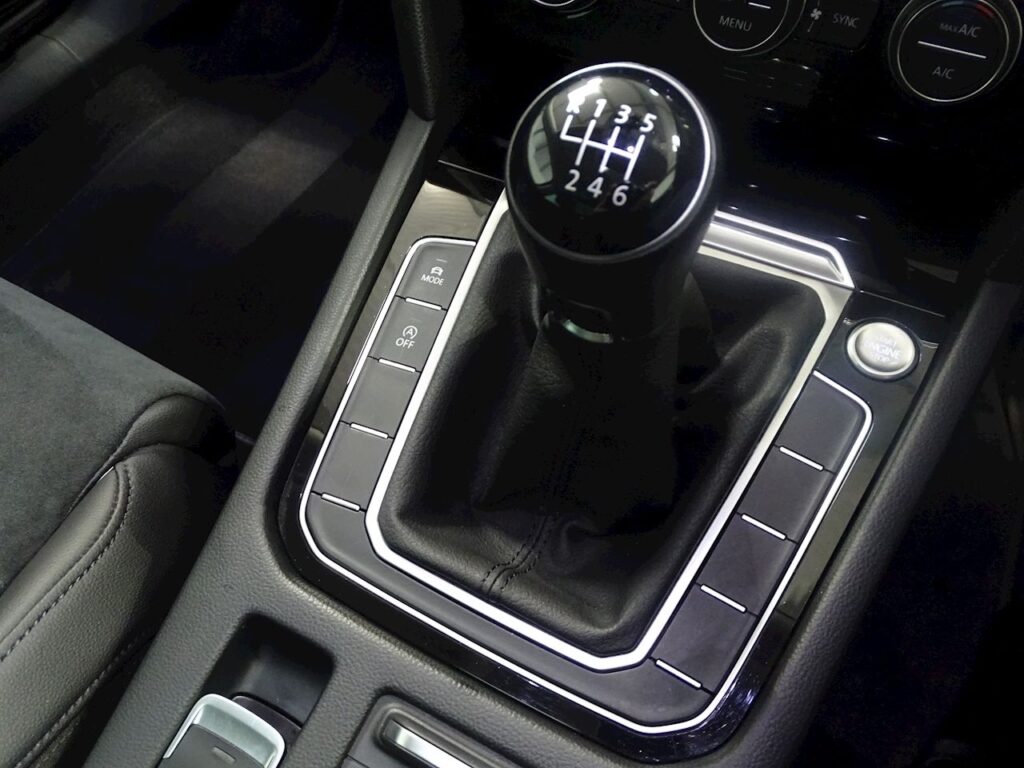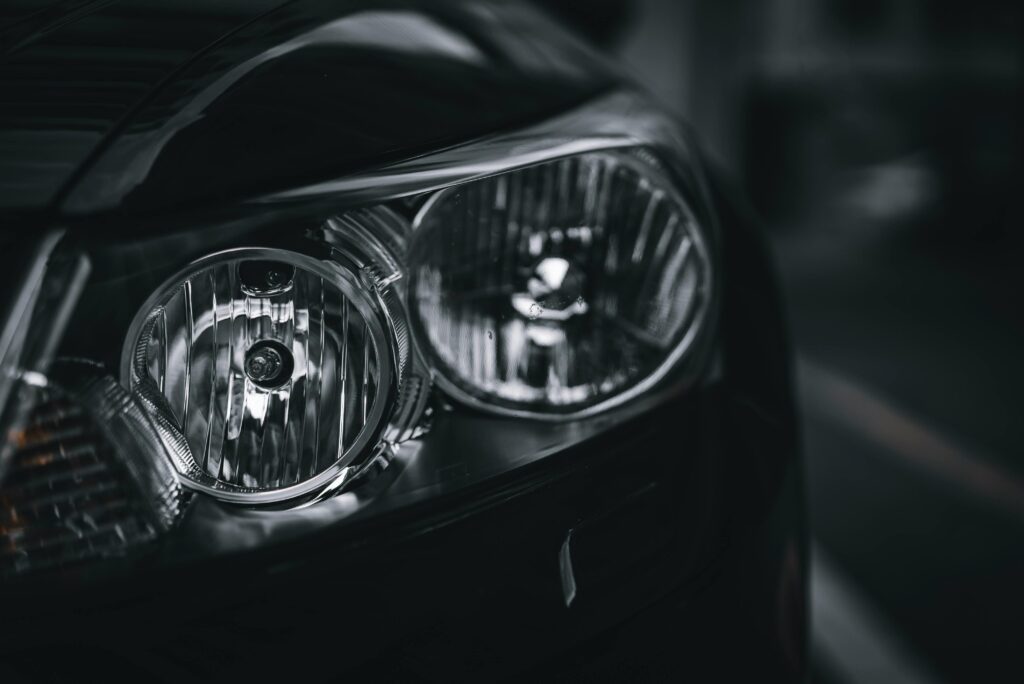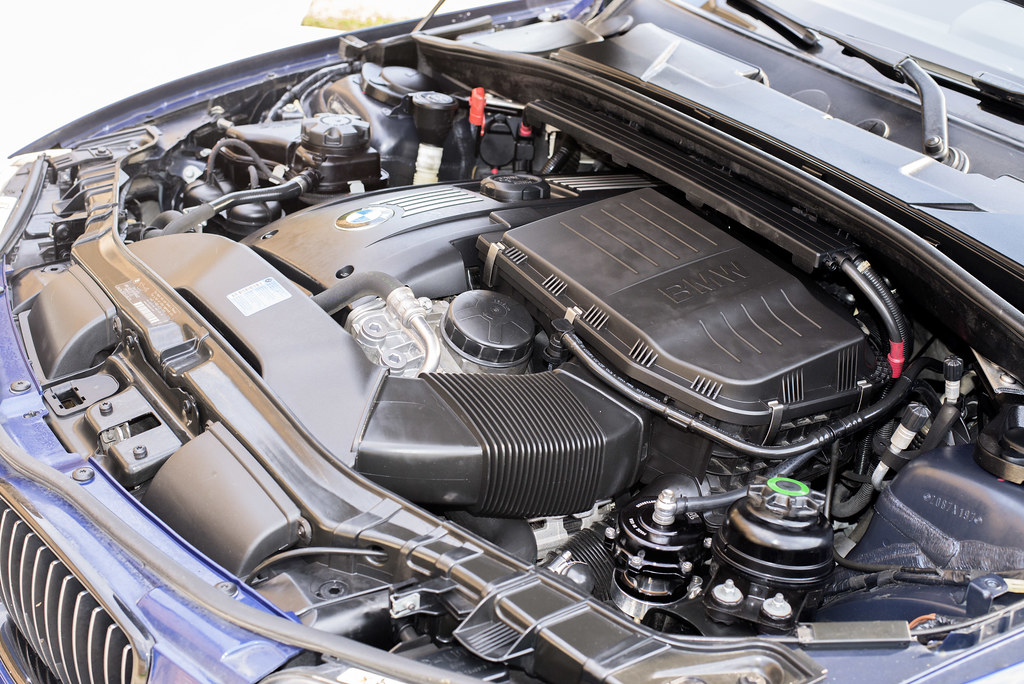
Modern automobiles are frequently marketed with an ever-expanding array of features, promising enhanced safety, unparalleled convenience, and a futuristic driving experience. The allure of cutting-edge technology, presented in glossy brochures and sleek advertisements, often paints a picture of seamless integration and effortless operation. However, the reality on the road can diverge significantly from these idealized visions, leaving many drivers feeling more frustrated than fulfilled by their vehicle’s supposed advancements.
For discerning consumers, the gap between “looked great on paper” and “disappointed in practice” is a crucial consideration. Our aim is to navigate beyond the marketing hype to deliver an objective, unbiased analysis of features that, despite their innovative intentions, frequently fall short in real-world usage. Drawing insights from a broad spectrum of real driver feedback across forums, reviews, and industry reports, we identify those elements that, instead of improving the driving experience, often introduce new layers of complexity, annoyance, or even potential hazards.
This comprehensive report delves into 12 such features, meticulously chosen for their prevalence in modern vehicles and the consistent stream of driver complaints they generate. From sophisticated driver assistance systems that feel more like a “stubborn 3,000-pound toddler” to infotainment screens that overcomplicate simple tasks, we dissect the practical implications and common pitfalls. Our goal is to equip you with the detailed, analytical information needed to make informed decisions, ensuring your next vehicle purchase prioritizes genuine utility and driver satisfaction over mere technological spectacle.

1. **Overly Aggressive Lane-Keeping and Departure Systems**Lane-keeping technologies, including lane centering assistance, lane keep assist, and lane departure warning systems, are designed with the commendable goal of enhancing safety by preventing unintentional lane departures. The premise is straightforward: sensors monitor the vehicle’s position relative to lane markings, providing alerts or even corrective steering inputs to keep the car on its intended path. On paper, this sounds like a significant step towards mitigating accidents caused by driver distraction or fatigue.
However, in practice, these systems often prove to be more intrusive than helpful, leading to widespread driver complaints. Drivers frequently report a feeling that the car is “a stubborn 3,000-pound toddler that won’t listen to you,” as the system can provide “sudden steering inputs that can feel unnatural and jarring.” This sensation stems from the system actively intervening in steering, which can be particularly unsettling and disorienting during routine driving.
The operational shortcomings extend beyond mere irritation. Many new car owners have shared experiences where lane centering can sometimes be dangerous, particularly when attempting to merge into a different lane or needing to move to the side to avoid a cyclist or parked police car. In such scenarios, “lane centering will think you’re out of control and force you back to the center of the lane,” directly counteracting the driver’s intentional and necessary maneuvers. This creates a conflict between human judgment and automated intervention, posing a potential safety risk.
Furthermore, these systems are prone to “false positives, where the system activates unnecessarily.” This means drivers receive alerts or steering corrections even when they are making deliberate lane changes or navigating roads with unclear markings. Such unnecessary interventions erode driver trust and can lead to drivers turning off the feature altogether, defeating its purpose. Real reviews indicate that while the feature can be helpful on long highway drives, it is less useful and more irritating in urban environments with frequent lane changes and poorly marked roads, underscoring a significant disconnect between design intent and real-world applicability.
Read more about: 2024 Subaru Ascent Review: Spacious Family Hauler with Tech Frustrations?

2. **Ubiquitous and Non-Intuitive Touchscreens & Digital Interfaces**The modern automotive cabin has undergone a dramatic transformation, with physical knobs, dials, and buttons increasingly supplanted by expansive touchscreens and digital dashboards. This shift is often lauded as a move towards a “minimalist, sleek look that sci-fi authors imagined back in the ’60s.” Automakers seem to believe that being “surrounded by screens in the cab” is a definitive sign of future-forward design, appealing to a desire for high-tech aesthetics and perceived sophistication.
Yet, the reality of these digital interfaces, according to many drivers and automotive experts, is often “just lame.” The “flat, lifeless touchscreens” are described as “completely uninspiring,” a stark contrast to the “knobs, dials, and buttons that made older dashboards feel like you’re in a jet fighter.” Even the tactile satisfaction of analog dials has been sacrificed for digital renditions on a screen. This push for digital-first design frequently overlooks the fundamental principles of ergonomics and driver interaction, prioritizing aesthetics over practical usability.
Beyond the aesthetic critique, the proliferation of touchscreens introduces significant safety concerns. “Without being able to feel a knob turning or a button-pushing down, drivers often have to look directly at the touchscreen to see what they’re trying to do.” This necessitates taking their eyes off the road, a dangerous distraction that can have serious consequences. Simple tasks like adjusting climate controls or changing radio stations, which were once instantaneous with physical controls, now require multiple taps and visual confirmation on a screen.
The problem is compounded by often “terrible feedback” and performance issues. “The internet is full of forums dedicated to newer Ford Mustangs having endless issues with lag — there have even been recalls for the screens going black, according to Kelley Blue Book.” Such reliability problems underscore that “innovation doesn’t always mean genius.” When basic car functions, climate controls, or safety alerts are tied to a glitchy or unresponsive screen, the vehicle transforms from a tool for everyday life into a source of frustration and potential hazard, prompting mechanics to note that they “often need to update software or replace the whole unit, which can cost thousands.”

3. **Intrusive Driver Monitoring and Collision Warning Systems**Modern vehicles are increasingly equipped with sophisticated monitoring and warning systems, ostensibly to enhance driver safety. Features like Driver Attention Alerts and Overly Aggressive Collision Warning Systems are designed to ensure drivers remain focused and to prevent potential impacts. The intention is undoubtedly noble: to provide an extra layer of vigilance and intervention when human attention falters.
However, the execution of these systems often leads to immense frustration for drivers. Toyota’s Driver Monitoring System, for instance, has been labeled “one of the world’s most irritating car features known to humanity.” This technology tracks the driver’s face, and drivers complain that it “suddenly yelps out rude things at you” even when attention is fully on the road. Examples include being told to “keep your eyes on the road” when already looking straight ahead, or “nagging them to ‘sit up straight’ when their back is already as upright as can be.”
Collision warning systems similarly draw ire when they become “overly aggressive.” These systems are intended to provide alerts for potential forward collisions, but their sensitivity can lead to “false alarms and driver annoyance.” Drivers report that these systems “can activate unnecessarily, providing constant alerts for minor or non-existent threats,” such as passing harmless objects like bushes or curbs. This constant barrage of unneeded warnings can desensitize drivers to actual hazards, diminishing the system’s effectiveness and leading them to mute or disable it.
The continuous, often unwarranted, admonitions from these systems create a sense of being “babysitting a confused robot on wheels” rather than being in control of one’s vehicle. Such an experience can be extremely distracting and, ironically, pull focus away from the road due to irritation. The widespread online complaints about these systems highlight a critical need for more refined detection algorithms and adjustable sensitivity settings to prevent them from becoming more of a nuisance than a genuine safety aid.
Read more about: Unlocking Your Driving Potential: 15 Expert-Backed Tricks to Become a Sharper, Safer Driver Today

4. **Non-Traditional Gear Selectors**The traditional gear shifter, a staple of automotive design for decades, has been undergoing a significant reimagining in many modern vehicles. Driven by a desire for minimalist interiors, increased cabin space, or simply to signal “we’re in the future,” automakers are experimenting with various non-traditional gear selectors, including unique shift patterns and push-button designs. While intended to appear innovative, these changes often create more confusion and inconvenience for drivers.
A prime example highlighted in driver feedback is the 2025 Mazda CX-70’s gearshift selector, which is cited as “the perfect example of ‘if it ain’t broke, don’t fix it.'” While it allows for moving up and down to switch between Drive and Reverse as usual, drivers “have to push the gearshift sideways to go into Park.” This deviation from established norms disrupts deeply ingrained “muscle memory” developed over decades of driving, leading to frustration and even potential safety issues.
Drivers commonly report pushing “the shifter up mindlessly and then realize it’s not working, and we’re even rolling backward!” Such instances demonstrate how seemingly minor design changes can have significant practical implications, making a fundamental vehicle operation counter-intuitive and potentially hazardous. The emotional response from drivers, pleading “Can’t we just keep the old gearshift? Mazda, you’re not special for this,” underscores a strong preference for functionality and familiarity over novelty.
Push-button gear selectors, another departure from tradition, present similar challenges. Replacing a tactile lever with a series of buttons or switches “can be confusing and less intuitive for drivers.” These systems often demand that drivers “take their eyes off the road to ensure they are selecting the correct gear,” adding another layer of distraction to a crucial function. The tactile feedback and straightforward operation of traditional shifters are often missed, reinforcing the idea that not every change is an improvement, and that sometimes, simpler is indeed better.

5. **Subscription-Gated Infotainment and Operating Systems**The push towards increasingly digital and connected vehicles has ushered in a new and contentious trend: infotainment systems that require ongoing subscriptions for full functionality. This model, exemplified by systems like Android Automotive OS, promises a customizable and app-rich in-car experience. In theory, it allows drivers to tailor their infotainment to their exact preferences, mirroring the flexibility of modern smartphones and tablets.
However, the reality of “Android Automotive OS” and similar systems is that they often come with a hidden cost and significant user resentment. Many drivers “have started to dread when automakers reveal that a car has implemented Android Automotive OS,” and for good reason. A major point of contention is the requirement to “pay for a monthly subscription to a data service if you want to add additional apps to your car’s infotainment system,” as reported by Android Police and Pickup Truck Talk.
This means that beyond the substantial upfront cost of the vehicle, and the ongoing expenses of insurance and car payments, consumers are now asked to “pay to use the loathsome touchscreen inside your vehicle.” This shift towards a “microtransaction” model for basic in-car features feels akin to “Ubisoft” in its approach, drawing parallels to gaming industries known for monetizing every aspect of the user experience. Drivers rightfully question why they should pay a recurring fee to fully utilize features that are an integral part of their vehicle’s hardware.
The concept of a car being “riddled with microtransactions” fundamentally changes the ownership experience, transforming what was once a one-time purchase into an ongoing revenue stream for manufacturers. While some cars may offer “better Android Automotive functionality than others,” a significant portion of the consumer base expresses a clear preference to “pass on them altogether.” The expectation is that an infotainment system, once purchased, should offer complete functionality without additional recurring charges, highlighting a disconnect between industry aspirations and consumer expectations regarding value and ownership.

6. **Pop-Out Door Handles**In the quest for improved aerodynamics and a sleek, futuristic aesthetic, some electric vehicle (EV) manufacturers have introduced pop-out door handles. Unlike traditional handles that are permanently accessible, these designs retract flush with the car’s body and deploy only when needed, typically upon approach or by interacting with a sensor. The perceived benefits include reduced drag, which theoretically contributes to better range, and a cleaner side profile for the vehicle.
However, for many drivers, these “flat handles that you have to dig out of the side of the car to operate” are a source of significant inconvenience and frustration. The simple act of opening a car door, which should be effortless and intuitive, becomes a deliberate, sometimes awkward, interaction. Drivers question whether “having no door handle sticking out really make that massive of an impact that I must be inconvenienced and angry before I even start driving?” This highlights a common sentiment that the supposed aerodynamic gains are minimal compared to the daily hassle imposed on the user.
Beyond the inconvenience, concerns about reliability are frequently raised. While “some EV enthusiasts claim they aren’t electric and can’t fail,” the reality is that “many EVs, including the Tesla Model 3’s door handle’s pop-out motion, are electric, meaning it’s possible it can fail.” The prospect of an electrically operated mechanism being crucial for basic entry raises legitimate worries about potential malfunctions, especially in adverse weather conditions or in the event of a dead battery.
Critics also point out the lack of alternative aerodynamic designs, suggesting that the “innovation” often feels more like “tech for tech’s sake” rather than a genuinely improved solution. The feature alienates those who value straightforward functionality and reliability over marginal aerodynamic improvements. For many, the frustration begins even “before I even start driving,” making pop-out door handles a prime example of a design choice that prioritizes form over practical, real-world function, ultimately disappointing the end-user.
Continuing our in-depth analysis, we now turn our attention to six more features prevalent in modern vehicles that, while promising advancements, often fail to deliver a genuinely improved user experience. From auditory deceptions to visibility hazards and practical inconveniences, these innovations frequently introduce new layers of frustration for the discerning consumer, underscoring the critical gap between marketing claims and real-world utility.
Read more about: Beyond the Mainstream: 15 Wild Classic Car Features Automakers Left in the Dust and Why You Won’t See Them Again

7. **Artificial Engine Sounds**For many car enthusiasts, the visceral experience of driving extends beyond performance metrics to encompass the very sound of the engine. Automakers, recognizing this deep connection, have attempted to bridge the auditory gap in electric vehicles (EVs) by introducing artificial engine sounds into the cabin. This feature aims to evoke the sensation of a powerful internal combustion engine, with some models even incorporating rumbling car seats to simulate the feel of a V8 cold-start, as noted by Kelley Blue Book. The intent is to appeal to a broad spectrum of drivers, particularly those who might find EVs lacking in traditional automotive character.
However, this attempt at sensory emulation has largely backfired, creating a lose-lose situation that satisfies neither manual purists nor dedicated EV enthusiasts. Drivers who appreciate the raw, unadulterated sounds of a gasoline engine often find these artificial renditions to be a mockery, a cheap copycat that fails to convincingly mimic the real thing. It transforms what should be an authentic driving experience into something performative, akin to ‘a 14-year-old boy playing with Hot Wheels,’ as one Reddit thread participant quipped. On the other side of the spectrum, EV enthusiasts, who often embrace electric vehicles precisely for their silent operation, view artificial engine noise as entirely superfluous.
They question the utility of wasting precious battery power on what they consider a useless effect. For these drivers, the quietude of an EV is a feature, not a deficit, and adding fake sounds detracts from the inherent advantages of electric propulsion. The widespread discontent highlights a fundamental misunderstanding of what different segments of the automotive market truly value, resulting in a feature that alienates more than it attracts.
Read more about: 15 Classic Cars You Might Want To Skip: An Expert Guide for Discerning Collectors

8. **Blue-Tinted LED Headlights**The evolution of automotive lighting has brought us brighter, more energy-efficient LED headlights, often designed with a distinct blue tint. These lights, while offering superior illumination for the driver of the equipped vehicle, have become a significant source of contention and even safety concern for other motorists. According to CBS News, new cars are now equipped with stronger LED lights than in the past, leading to widespread reports of drivers being completely blinded by their intensity, particularly in rearview mirrors or from oncoming traffic.
The problem stems from the sheer volume of light and its specific spectrum, which many perceive as an aggressive glare. Petitions have emerged advocating for the ban of these new headlights, driven by concerns for safety and general anger from drivers who describe the experience of encountering them as ‘staring into the eclipse.’ This highlights a critical oversight in design, where the benefit to one driver comes at a significant cost to the comfort and safety of others sharing the road. The issue is compounded by the fact that flashing high beams at these blinding lights is not illegal, creating a cycle of frustration rather than resolution.
For many, the desire is not for more intense light, but for more considerate and regulated illumination. The call to ‘ban the beams’ and even bring back nostalgic options like pop-up headlights underscores a consumer preference for practicality and mutual consideration over pure luminosity. When a feature intended to improve visibility inadvertently creates a new hazard for a significant portion of the driving public, its real-world value is severely undermined, leading to a diminished overall driving experience for all.

9. **Overly Complex Keyless Entry Systems and Wireless Key Fobs**Keyless entry and push-button start systems have become a standard offering in many modern vehicles, promising unparalleled convenience by allowing drivers to unlock and start their cars without ever removing the key fob from a pocket or bag. The allure of this hands-free operation is strong, suggesting a seamless integration into the busy lives of contemporary drivers. However, the practical reality of these advanced systems often introduces a host of new frustrations and potential complications that counteract their intended benefits.
A primary point of failure and annoyance revolves around the key fob itself. Should the key fob battery die, drivers can find themselves locked out of their vehicle or, even more critically, unable to start the car. The process of replacing or reprogramming a lost or malfunctioning fob can be surprisingly costly, often running into hundreds of dollars. Furthermore, the increased reliance on wireless signals introduces security vulnerabilities, with some systems reportedly susceptible to hacking, posing a risk to vehicle security.
From a maintenance perspective, these systems present significant challenges for mechanics. Diagnosing issues related to keyless entry or push-button start can be exceptionally time-consuming due to their intricate electronic nature. Often, the only viable solution for certain malfunctions is a trip to the dealership, which invariably translates into higher costs and extended wait times for the car owner. Compounding this, many modern key fobs have grown significantly in size, becoming ‘massive key fobs’ that are bulky and inconvenient to carry, barely fitting into pockets or purses, thus negating much of their supposed ‘hands-free’ convenience. This combination of reliability concerns, costly repairs, and ergonomic shortcomings makes these systems a frequent source of consumer discontent.
Read more about: Navigating the Price Tag: 9 Car Tech Features That Add $5000 (But You Can Smartly Skip) for Savvy Buyers

10. **Satellite Radio**In an era dominated by ubiquitous digital content, the inclusion of satellite radio as a feature in new vehicles often stands out as an increasingly antiquated option. Once perceived as a burgeoning technology, satellite radio began to boom just as the iPod was gaining traction, creating an early challenge to its long-term viability. The fundamental question for consumers became apparent: why commit to a monthly subscription fee for satellite radio when a vast personal music catalog could be accessed without recurring charges?
The landscape was irrevocably altered with the subsequent rise of streaming services such as Spotify and Pandora. These platforms offered an unparalleled breadth of content, superior quality, and often more flexible access models, delivering the final death knell to satellite radio’s widespread appeal. Despite this clear shift in consumer preference, most new cars continue to offer satellite radio as an option, complete with promotional subscription trials, in an attempt by manufacturers to sustain the medium.
However, for the majority of car shoppers today, satellite radio simply isn’t a desired feature. Built-in satellite radio decks are increasingly seen as outdated, with streaming services providing a far richer and more convenient listening experience. The consensus among drivers is clear: streaming content directly from a smartphone is ‘a whole lot easier’ and offers more in the way of both content variety and audio fidelity. This persistent push for a service that has been largely superseded by more advanced and user-friendly alternatives represents a significant disconnect between automotive offerings and genuine consumer demand, often adding unnecessary cost to the vehicle or appearing as a superfluous inclusion.
Read more about: Unveiling the Future: Life Aboard the USS Gerald R. Ford, the World’s Largest Aircraft Carrier

11. **Automatic Engine Start-Stop Systems**Automatic engine start-stop systems are a prime example of technology designed with a commendable objective—improving fuel efficiency—that frequently compromises the driving experience. These systems automatically shut off the engine when the vehicle comes to a complete standstill, such as at a stoplight or in heavy traffic, and then restart it when the driver releases the brake pedal. While the theoretical fuel savings are appealing, the practical implementation has proven to be a consistent source of annoyance and concern for many drivers.
Consumer complaints about these systems often center on the noticeable delay and the ‘rough restart’ when the engine re-engages, which can be jarring and disruptive, especially in stop-and-go driving conditions. Drivers report that the system can even interfere with the consistent operation of comfort features like air conditioning or heating, as engine power fluctuates. The frustration is compounded by the fact that, in many cars, disabling this feature is either difficult, temporary, or entirely impossible, forcing drivers to endure an experience they find unsatisfactory.
Beyond immediate driver annoyance, these systems introduce long-term concerns regarding vehicle maintenance. Mechanics are increasingly reporting that start-stop systems place ‘extra strain on the starter, battery, and other components.’ This added stress often leads to premature wear, resulting in cars needing replacement starters and batteries much sooner than anticipated, sometimes after just a few years of ownership. These replacements are costly, particularly if the vehicle requires a specialized, heavy-duty battery designed to withstand the frequent cycling. The system, while environmentally conscious, inadvertently elevates maintenance costs and reduces component longevity, creating a hidden expense for car owners.
Read more about: Buckle Up! These 15 Car Trends Are Making Everyone Nuts – And Need to Stay in the Past!

12. **Run-Flat Tires**Run-flat tires are marketed as a revolutionary safety feature, offering drivers the ability to continue traveling for a limited distance and speed even after a puncture, thereby eliminating the immediate need for a roadside tire change. This innovation is presented as a significant convenience and a potential lifesaver, allowing drivers to reach a service station safely. On paper, the concept appears to be a clear improvement over traditional tires that require immediate attention upon sustaining damage.
Run-flat tires are marketed as a revolutionary safety feature, offering drivers the ability to continue traveling for a limited distance and speed even after a puncture, thereby eliminating the immediate need for a roadside tire change. This innovation is presented as a significant convenience and a potential lifesaver, allowing drivers to reach a service station safely. On paper, the concept appears to be a clear improvement over traditional tires that require immediate attention upon sustaining damage.
However, the real-world application of run-flat tires comes with a distinct set of trade-offs that many drivers find inconvenient and unsatisfactory. A widespread complaint is that these tires tend to provide a noticeably ‘harsher ride’ due to their reinforced sidewalls, which are necessary for their self-supporting capability. This often translates into reduced comfort and a less refined driving experience, particularly on uneven road surfaces. Furthermore, run-flat tires typically have a ‘shorter lifespan’ compared to their conventional counterparts and are considerably ‘more expensive to replace,’ adding to the long-term cost of vehicle ownership.
These factors lead many drivers to question the overall value proposition of run-flat tires. While the safety net they offer is undeniable, the compromises in ride quality, durability, and cost often overshadow the benefits for daily driving. Reviews frequently mention the discomfort and higher maintenance expenses associated with run-flats, suggesting that a traditional spare tire, while less convenient in an immediate puncture scenario, might ultimately be a more practical and economical option for a significant portion of the driving public. The ideal solution, for many consumers, remains a balance between safety, comfort, and affordability, which run-flat tires often struggle to achieve simultaneously.
Read more about: Beyond the Zombie Hordes: 12 Indestructible Beasts to Master Any Apocalypse
Ultimately, the journey of automotive innovation is paved with good intentions, but not all paths lead to improved driver satisfaction. As we’ve meticulously detailed, the modern car market is replete with features that, despite their technological sophistication or aesthetic appeal, frequently introduce more frustration than convenience. From sensory deceptions and problematic lighting to inconvenient access and outdated connectivity, these elements underscore a critical need for automakers to re-evaluate their priorities. The goal should always be to genuinely enhance the driving experience, prioritizing intuitive functionality, proven reliability, and practical utility over mere novelty or the pursuit of ‘tech for tech’s sake.’ Consumers, armed with objective analysis and real-world feedback, are increasingly vocal in their demand for vehicles that truly serve their needs, rather than complicate them. The future of automotive design must focus on making driving genuinely better, not just different, ensuring that every feature truly contributes to a more satisfying and less frustrating journey.



